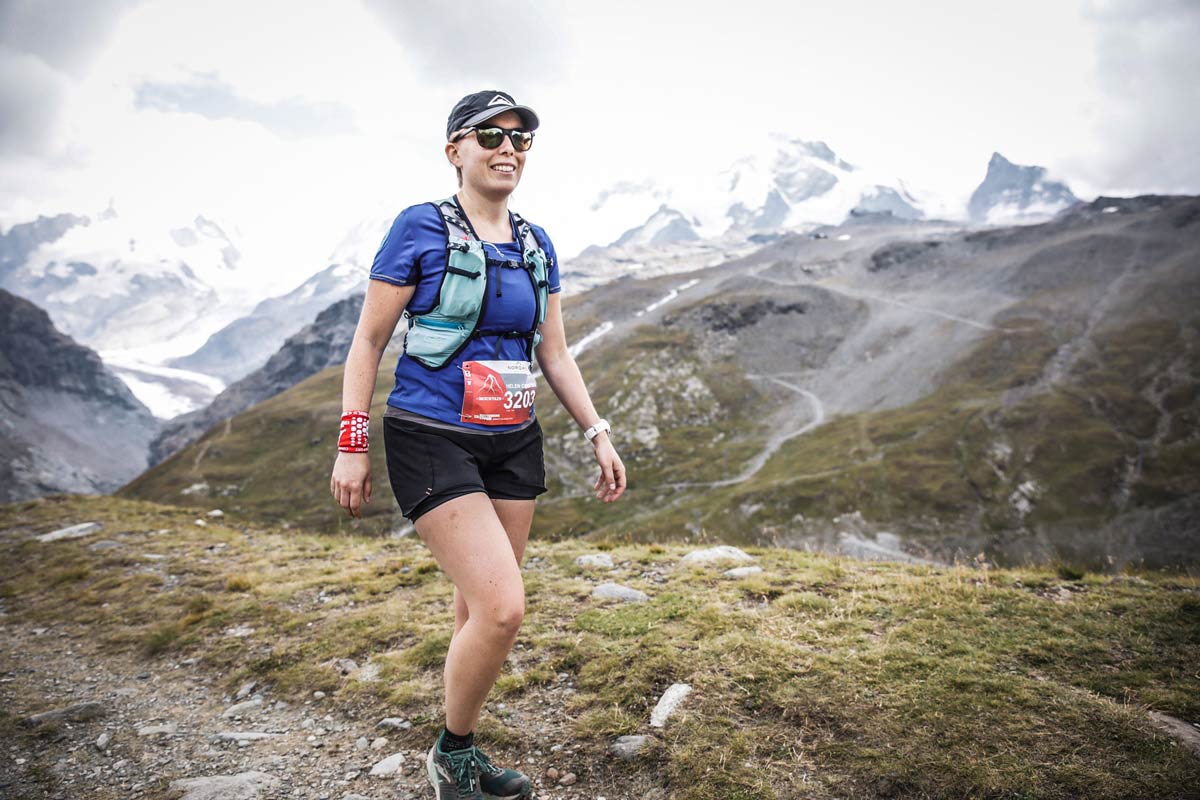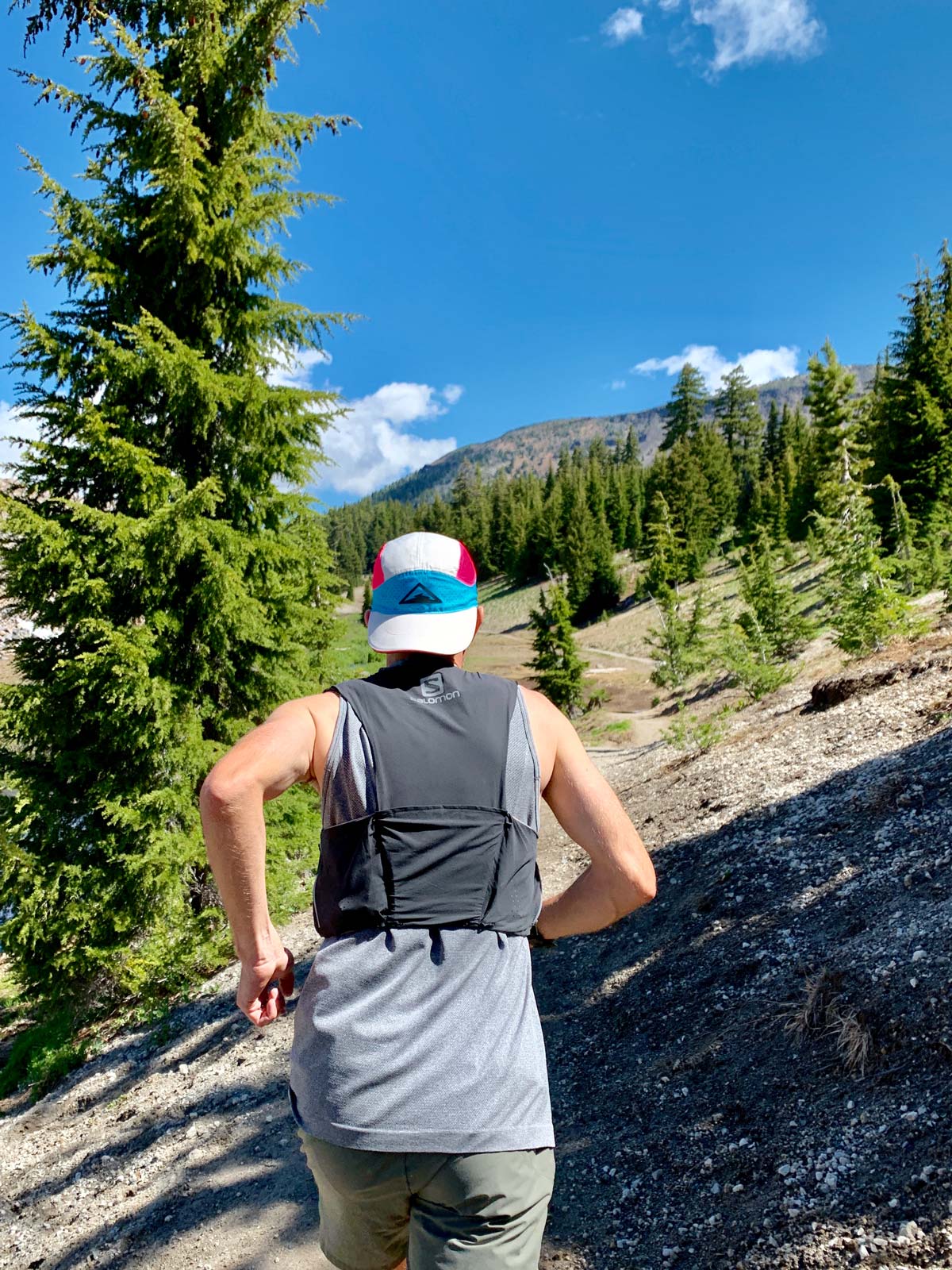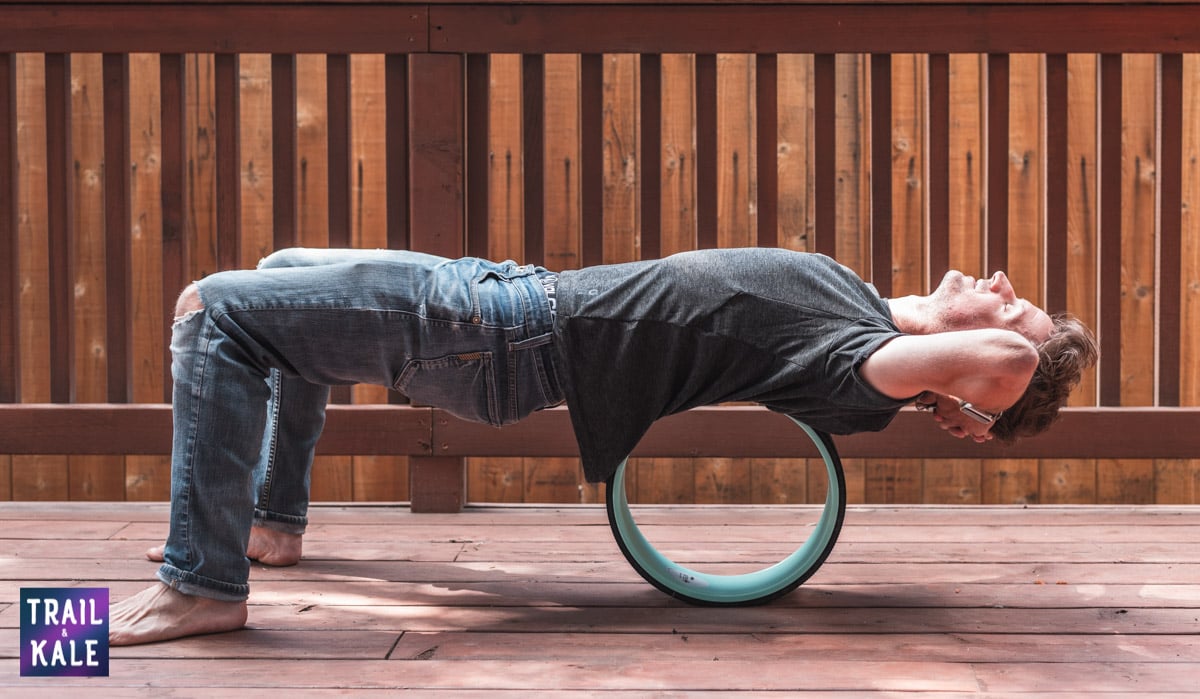An aching back isn’t the first thing that comes to mind when you think about running injuries, but it is a surprisingly common problem for many runners.
I’ve personally had significant back aches from running at certain times in my running life, but fortunately have been able to overcome it and come back stronger!
The back aches I experienced during and as a result of running led me to investigate the reasons why your back may ache when you are a runner, how to stop it and ultimately how to do as much as possible to prevent it from happening again.
Even if you don’t often experience lower back pain when running (this also includes mid back pain from running), taking these steps to improve your running fitness, form and how you treat your back in your everyday lifestyle can all contribute to making you a stronger and healthier runner, so it’s still worth a read 🙂
This post is written from my personal experience and will hopefully help provide some things to think about when trying to stop your back hurting after running, but of course the cause of your back ache could be different so it’s obviously important to consult an expert physical therapist or doctor to help you in this area.
6 possible causes of lower back pain when running
1. Poor Running Form
The number one reason I was getting lower back pain when running is that my running form was not as good as it could have been.
Running can cause repetitive stress on your body if done incorrectly (yes there’s definitely a right and wrong way to run), so it’s extremely important to be stressing those muscles properly so that they can build back stronger rather than picking up injuries.
This is also the most common reason that most people’s lower back hurts after running but luckily it’s one of the easiest to fix as long as you consistently follow the advice given to help improve your running form.
I consulted my trusted physio and she explained that my posture when I run was suffering due to insufficient core strength.
In layman’s terms, this meant I was sticking my butt and stomach out, allowing my pelvis to tip forward and putting strain on my lower back, rather than letting my glutes do more of the work when I run.
So what did I do? I went on a mission to learn everything I could on how to improve my running form, of course.
The analogy many use, which has stuck with me today, is to think of your pelvis/hips area as a full bucket of water – you shouldn’t allow it to tip from side to side or front to back (as you would spill the water!).
It needs to be a stable, ‘core’ part of your core muscles to allow your body to work effectively when you run (or walk, for that matter).
Your core muscles is at the core of good running form, and your glutes too! 🙂
To work on this area, I was recommended to do a set of core exercises to help with strengthening, improving my posture, and reducing my time to fatigue – because when you’re tired, your form suffers and you probably find you start to slouch or ‘sag’!
This explains why the problem became worse when I did longer runs – towards the end of a long run or race was when I really started to get a bad backache because that’s when I was the most tired and my running for was suffering.
2. Over-training (or under-training)

Over-training can mean a lot of things, but essentially it means you’re doing too much training – whether you’re running too often, too far, too fast or too soon in your training plan – and possibly not getting the right recovery in terms of rest, sleep and appropriate nutrition.
Over-training is the sneaky cause of many running injuries, and especially those that come on slowly and gradually get worse and worse – like IT band pain, shin splints, and… a dull yet intense backache while running.
Under-training is also a potential cause of why your back hurts after running.
Think about running a race you’re unprepared for – you go out and try to do too much on the big day – more than you have worked up to, and more than you have the strength and stamina to complete without putting your body under serious stress.
I’m guilty of this – signing up for an ultra and then not doing quite enough training in advance, so that race day is a gargantuan effort and I ran that race mostly with my mind, letting my tired body do its best to carrying me the distance.
I once started a 120k (70 mile) mountain ultra after running no further than 55k in training… a mistake I won’t make again!
I ran 8 hours through the night and over several mountain passes, only to call it a ‘day’ following daybreak because the back ache I was getting from running became so intense that I was worried about long-term issues if I was to continue.
When I think back to the training, I was under-trained, and a tired body after 8 hours of mountain running was to be expected – it links back to the ‘poor running form’ described above.
I was definitely tired, my form was bad, and my back was doing way too much work than it should have been, to compensate for poor posture and tired glutes, abs, and legs.
The solution – quite simply, be intentional and reasonable when you plan your training and races.
It’s great to have big goals but there’s also a reason that doing too much training causes injuries, and running a long way in terms of distance or duration with insufficient training will have the same outcome.
3. Wearing a heavy hydration pack or running backpack

This one is pretty common sense, if your pack is overly heavy or you haven’t trained your body to comfortably carry weight over distance and time, then it can make your back ache pretty quickly.
This applies when walking and hiking, and is even more so the case when you’re running – it can through your running form off and your body is literally weighed down, which can rapidly start to be uncomfortable and cause an aching back.
If you’re looking for a new hydration pack that is the right size and fit for you, have a look at our buyer’s guides for women’s and men’s hydration packs.
It’s also worth considering what to pack and carry when trail running, as it can be tempting to pack more than you need if you’re new to the sport.
4. Your everyday posture
You don’t need to be a professional athlete to take looking after your body seriously, and this includes thinking about how you go about other aspects of your day, and how that may affect your ability to run efficiently and reduce your risk of injuries such as lower back pain when running.
Aspects of your day to consider in this category include:
- Your posture when standing can cause muscle strain on your back.
- How you sit when working and driving – is your chair the right height? Is it supportive of your back? Are you slouching?
- What shoes you wear when you’re standing and walking around – we always recommend On Cloud shoes for those who stand up a lot during the day, as it’s lightweight, well-cushioned, and can easily be slipped on and off.
When I stopped to consider about how my everyday shoes could be affecting my running form, I found myself quickly ditching all but the smallest heels at work.
This is despite the fact that I LOVE stilettos, they weren’t doing my posture (or my long-suffering feet) any good and I love running more than I do stilettos!
5. Your choice of running shoes
Wearing running shoes that do not compliment your running style and help you maintain good posture and form is another thing that can contribute to lower back pain when running.
If you’re looking to learn about what may be the best running shoes for you, have a read of our road running shoes and trail running shoes buyer’s guides for our top running shoe recommendations that offer proper support, and great performance.
Also read our Trail Running For Beginners post if you’re new to trails, as that in itself can be a reason why your back aches, if you’re not used to the hills and uneven terrain you encounter when you head off-road. That post will teach you how to start, and also make the most of bossing the trails.
6. Your mattress could be causing your back to ache when you run
The wrong mattress for your body and sleep style can actually just cause your back to ache in general – but it can be exacerbated when you go out running.
A good night’s sleep is also very important to help with recovery and overall wellbeing, so a comfortable mattress is important and may help to reduce the instances of your back aching when running, too.
Tips to help ease an aching back
If my back aches when running or after a run, I use one or a combination of several of these remedies to get it feeling better:
- Massage
- Stretch
- Warm bath / heat pack
- CBD rubs
It’s hard to beat a good professional massage or physical therapy to relieve muscle strain on an aching back, but unfortunately, I don’t get to have these all that often, so I have to go DIY to get my back stretched and massaged back to normal.
To stretch my back I use my Chirp Wheel pretty much every day – you can see Alastair demonstrating it above.
There’s nothing quite like rolling around on this thing at the end of a long run or long day, even if just for a minute to reduce muscle soreness/tightness or calm those muscle spasms.
It’s infinitely more effective than trying to use a foam roller to do the same thing. For more on why the Chirp Wheel gets our approval, read Alastair’s Chirp Wheel review next.
These yoga stretches for runners are also really helpful for stretching out backs as well as other key parts of your body that get used intensively when running.
As well as these stretches, it really helps to ensure you do a proper warm up before you run, and cool down after you’ve finished each run.
By doing dynamic stretches as part of your warm-up, and static stretches to help with flexibility and recovery afterwards, you can reduce the chance of soreness from running.
Visit our guide to the best stretches for runners for a list of my favorite stretches to do, as well as video demonstrations.
A warm bath after a long or hard run is really helpful, especially if I follow that up with a massage using a CBD rub designed to help athletes recover – such as Level Select’s amazingly potent CBD Pain Cream, which we highly recommend in our Level Select CBD Review.
Our Best CBD Topicals for Runners post includes a list of our favorite CBD balms for helping eliminate aches.
I hope this post has been helpful if you’ve been getting lower back pain when running and wondering what could be causing it.
Of course, googling things like this isn’t a sure-fire way of solving back ache and it’s best to consult a professional if you have any concerns, but hopefully, you’re like me and it’s something some changes to your training and lifestyle can help resolve so you can be back running without your back aching!
As always, if you’d like to get a glimpse into our trail running, and adventure lifestyle, come follow us on YouTube, and say hello!! 🙂






Thank you. Great info. I purchased the Chirps because of your recommendation and the $99 offer. ??
You’re welcome! Hope you enjoy them as much as we do!!